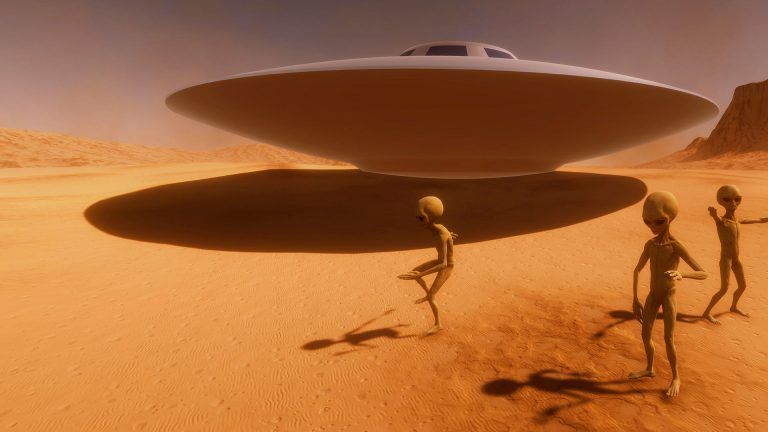Just north of the Martian equator lies a 45 km (28 mi) wide impact crater that scientists believe may have been the site of an ancient lake. Here at Jezero Crater, scientists theorize that its frozen soil may contain the most significant discovery of humankind, life. On February 18th, 2021, NASA’s Perseverance rover will search this crater to find out if we’re truly alone.
What is the likelihood of life on Mars? What would these Martians look like? How will we send samples back to Earth?
As Scientific American puts it, “it would take a near miracle for Mars to be sterile.” Astrobiologist Chris McKay at Nasa believes that Earth and Mars have been sharing materials for billions of years. Kind of like using your roommate’s spice rack. What? I thought you said it was communal.
Comets or large meteorites that have hit Earth may have also sent debris onto Mars. A tiny fraction of this debris on Mars could have carried the same microbes that kickstarted life as we know it on Earth. But what would this alien life look like?
Many scientists agree that whatever life on Mars we might find would need to be incredibly robust. With the combination of radiation and freezing temperatures on Mars, could any lifeform survive such a harsh environment?
As far-fetched as it sounds, microbiologists have discovered many organisms that thrive in extreme environments. The tardigrade, or water bear, is a highly resistant extremophile. It can withstand extreme heat, cold, pressure, radiation, and even a complete lack of oxygen.
There are also certain types of bacteria on Earth that rapidly produce spores when faced with hazardous conditions. The bacteria can then hibernate during an extended period of drought and withstand intense ionizing radiation.
A team of over 1,000 geologists, chemists, physicists, and biologists worldwide have drilled 4.8 km (3 mi) into the Earth and discovered robust lifeforms. Mars has a similar geological past to Earth. So looking underground could be a great place to start.
By drilling into the Jezero Crater, we could encounter spores associated with a relatively recent geological era. And on future missions to Mars, we may dig even deeper and uncover fully vegetative microbes. To find rock samples that might support life, NASA’s Perseverance rover uses an array of lasers, called a SuperCam. It can study the surface of Mars at a distance.
One of the lasers will heat a rock sample and vaporize it. This creates a plasma that can be analyzed to understand its elemental composition. Another laser will reveal which compounds are in the dirt.
If the SuperCam detects organic molecules or elevated concentrations of elements like nitrogen or phosphorus, the rover will head over to take a closer look. It will then scan the soil in greater detail to detect any organic material hiding in the dirt. NASA’s team on Earth only has one shot at picking the right spot to gather these samples. With limited space onboard the rover, only a few dozen samples can be collected.
So no pressure, and uh, fingers crossed. If all goes well, NASA plans to bring back samples known for preserving biosignatures on Earth. Biosignatures are faint molecular traces left behind by microbes billions of years ago.
Once the samples are collected, NASA and the European Space Agency plan two missions to get them back to Earth. This involves blasting tubes of rock and soil samples into orbit to be collected by another spacecraft and then returned to Earth. Woah, this looks kinda fun.
If Perseverance’s mission is successful, the discovery of life on Mars would be as groundbreaking as the discovery of DNA. In 1543, Copernicus boldly shook the status quo with his theory that the planets orbited the Sun. His discoveries completely changed our worldview, no longer putting Earth at the center of the Universe.
Discovering life beyond Earth could be just as powerful. But not finding any life could raise even more questions. Is the Earth truly special? Are we alone out there? Even if we don’t discover life, these Martian rock samples will allow chemists to study the geochemistry, mineralogy, and foundational bedrock materials of Mars in detail.
In 1976, two Viking landers became the first spacecrafts from Earth to touch down on Mars. They too probed for life in the Martian soil, and the results are still debated to this day. One experiment indicated that the Martian soil tested positive for metabolism. On Earth, this would almost certainly suggest the presence of life. But another related experiment found no trace of organic material whatsoever.
While most scientists have not reconciled the conflicting results, the consensus is that there is no conclusive evidence of life on Mars. But several researchers disagree. Recent discoveries of terrestrial microorganisms surviving outside of the ISS indicate that life may be resilient enough for Mars.
And methane in the Martian atmosphere could be a sign of microbial methanogens, a type of microorganism that produces a significant amount of methane. Stinky aliens. Mind you, it’s possible that life on Mars didn’t have the right conditions to start at all. Or maybe it died off from an extinction event similar to the asteroid that wiped out the dinosaurs.
Or it’s even possible that we might end up finding life that was accidentally brought to Mars by one of our many rovers. Let’s hope this Perseverance mission doesn’t turn into a 2.7 billion dollar face-palm. If Mars is your bag, well, have you ever thought about setting up shop there? With recent developments in rocketry, colonizing Mars might be possible in our lifetime.
Sources
- “Mars Facts: Interesting Facts About Planet Mars • The Planets”. 2021. The Planets.
- “How Long Does It Take to Get to Mars?”. youtube.com
- “Landing Toolkit: Perseverance Rover”. 2021. mars.nasa.gov.
- “The 5 Possibilities For Life On Mars”. Siegel, Ethan. 2021. Forbes.
- “Life On Mars?”. 2005. Smithsonian Magazine.
- “Did 40-year-old Viking experiment discover life on Mars?”. 2021. phys.org.
- “I’m Convinced We Found Evidence of Life on Mars in the 1970s”. Levin, Gilbert. 2019. Scientific American Blog Network.


















